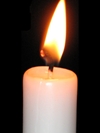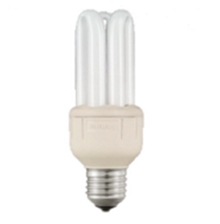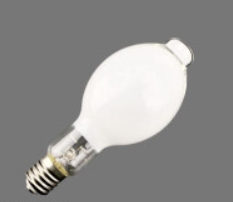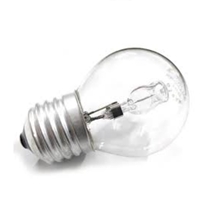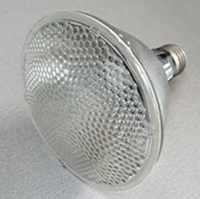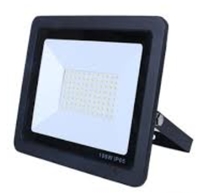- 27
- Apr
What is the Official Definition of Light?
What is the Official Definition of Light?
Light is no stranger to everyone. And what about the photometry? Can everyone know? As lighting professionals, we must understand what is the photometry. Because the higher the degree of professionalism, the more accurately we can provide products to customers.
Photometry was established by Lambert in 1760, and defined the main optical photometric parameters such as luminous flux, luminous intensity, illuminance, brightness, etc., and used mathematics to clarify the relationship between them and several important laws of photometry, such as the superposition of illuminance Law, distance square ratio law, cosine law of illuminance, etc. These laws have been used all the time, and practice has proved to be correct. In the visible light band, the corresponding metrology subject after considering the subjective factors of the human eye is called photometry.
Next, we will explain photometry to you in five aspects. Photometry: history of lighting, basic concepts of optics, radiometry and photometry, black body radiation spectrum and examples of lighting calculations.
What is the scientific definition of lighting?
Visible light can be perceived by the human eye. When visible light is irradiated on an object and reflected to the human eye, vision is formed. Humans can perceive the light and shade, color, material and other characteristics of the object. This process is lighting.
It is a very complex physiological process that the human eye receives light signals and finally transmits them to the brain to form vision. This process is not a purely physical process, and the sensitivity of the human eye to different wavelengths of light is different. Parameters, that is, the research involves the characteristics of lighting and its parameters, which need to be weighted according to the visual characteristics. The related theory is called photometric common concepts and related calculations.
Where did lighting originate?
The most important light source for lighting in human history is the sun. The sun is a hot gaseous sphere mainly composed of hydrogen. Its internal temperature is as high as several million degrees Celsius, and its surface thermodynamic temperature is about 6000K. Please mark 6000K and learn the keywords of lighting color temperature with us. The sun sends light and heat to the Earth every moment, and its energy is produced by the continuous thermonuclear fusion inside the sun. Of course, there is not only visible light; but also a large number of infrared rays, ultraviolet rays, X-rays, etc. The sunlight at noon can form an illuminance above 10⁵lx on the ground. In ancient times, daytime lighting mainly relied on the sun. At night, when there is a moon, you can rely on the moon for a certain degree of lighting, but the lighting is very low, and it is only about 0.2lx when the moon is full, which greatly limits human nighttime activities. With the continuous improvement of the ability of humans to transform nature, in order to dispel the darkness after the sun sets and continue to work and live, people began to manufacture light sources by themselves. The history of human manufacturing and utilization of light sources is almost as long as the history of human development.
What was the history of lighting before electricity?
The first light source used by humans is a fire light source. As early as 40,000 to 500,000 years ago, the Zhoukoudian ape-man in Beijing, China knew how to attract fire from the fire in nature; and keep it burning and glowing, to keep it illuminated in the dark. About 100,000 years ago, in the period of ancient humans, humans learned to make fire by rubbing stones and drilling wood. Later, people invented candles, kerosene lamps, and gas lamps, but none of them got rid of using fire to get light.
| The first stage | The second stage | The third stage | The fourth stage | The fifth stage |
|
|
|
|
|
|
When was lighting invented?
Around 1807, Fry Davy in England discovered in a chemical experiment that when two electric carbon rods approached a certain distance, a very bright arc light would be emitted, and then he invented the arc lamp made of carbon poles. British physicist and chemist Joseph Wilson Swan then developed a carbon filament electric lamp by using the principle of luminescence when an electric current passes through the carbon filament, but the lifespan is short. The great American inventor Thomas Alva Edison successively experimented with filaments made of more than 1,600 materials, and finally selected tungsten filaments as the filament, which made the life of the bulb reach 10,000 hours, and electric lamps have since replaced gas lamps.
When did lighting in houses start?
With the advancement of science and technology, electric light sources continue to develop and new varieties emerge.
| NO. | Inventio Time | Lamp Type | Picture |
| 1 | 1931AD |
Low pressure sodium lamp |
|
|
2 |
1936AD |
Fluorescent lamp High pressure mercury lamp |
|
|
3 |
1959AD | Halogen lamp |
|
|
4 |
1964AD | Metal halide lamp |
|
| 5 | 1973AD |
Trichromatic fluorescent lamp |
|
|
6 |
1980AD |
Compact fluorescent lamp |
|
|
7 |
1991AD |
High frequency electrodeless lamp |
|
|
8 |
2000AD | LED |
|
What are the advantages of low pressure sodium lighting?
The unique monochromatic yellow light that improves visibility in foggy weather: its emission wavelengths are 589.0nm and 589.6nm, this monochromatic light characteristic means that they produce specific wavelengths, and the positions of the two yellow spectral lines are close to each other The most sensitive wavelength of the human eye is the green spectral line at 555.0nm, so there is no need for filters or phosphors required by other types of lamps, and the visual resolution is also high. Therefore, low-pressure sodium lamps can convert most of the electrical energy into usable light without wasting energy producing unwanted colors.
Low heat energy loss, high luminous efficiency and long service life: the low-pressure sodium lamp uses a sealed tubular glass as the outer shell, and the lamp body does not contain filaments or electrodes; light is generated through the process of sodium vapor circulation, and sodium atoms are excited by the gas mixture to generate current, and finally The influence of heat dissipation is not considered. However, incandescent lamps and halogen lamps will generate a lot of heat when they work, because relying on the light of the filament, the lack of heat energy in the future will cause light decay. The highest luminous efficiency of low-pressure sodium lamps can reach 200lm/W, and the lowest luminous efficiency can reach 140lm/W; from the analysis of luminous efficiency: the luminous efficiency of 140lm/W low-pressure sodium lamps is 10-20 times that of ordinary incandescent lamps, and 3-4 times that of ordinary fluorescent lamps. 4 times that of high-pressure mercury lamps. Illuminance analysis of low-pressure sodium lamps: when a 36w low-pressure sodium lamp system is used for a street lamp with a height of 8m, the ground illuminance is 24.5 lux; while a street lamp of the same height uses an 85w energy-saving lamp, the ground illuminance is only 4.4 lux. From the power analysis of low-pressure sodium lamps, 100w low-pressure sodium lamps can completely replace 275W high-pressure sodium lamps.
What are the disadvantages of low pressure sodium vapour lamp?
Limited color rendering ability (monochromatic yellow light)
Compared with LED (light-emitting diode) lamps, low-pressure sodium lamps only have monochromatic yellow light, which cannot accurately render the color of objects,and it is difficult for us to distinguish different hues, so we can easily distort the appearance of object colors in terms of viewing angle effects, resulting in color rendering Seriously poor, such as retail stores, jewelry stores, barber shops, hotels, museums, art galleries, family homes or photography studios. LED lights have a wide range of color temperature and high color rendering index. We can see from the integrating sphere test report that the light generated by LED lights is in the visible spectrum range, which can achieve better color rendering performance and color rendering. Designers love it. LEDs are flexible in application, capable of producing different color temperatures, and can be easily dimmed or controlled.
Start reserved time: reserved warm-up time at initial startup, reserved cooling time before restart.
Initial start-up time: The theoretical range is 2 ~ 5 minutes, and the actual range is 5 ~ 10 minutes, during which the light emits a faint red until it reaches the normal operating temperature.
Restart time: You must wait for the residual heat from the previous operation to dissipate before re-ignition. The restart time, theoretically in the range of 5 to 10 minutes, is usually in the range of 15 to 20 minutes.
The start-up time is actually closely related to the outdoor ambient temperature and the configuration of the lamp. For example, warm-up and restart times are longer at low temperatures.
What 3 benefits do LED lights have?
Both the S. Department of Energy (DOE) and Energy Star have reported that LEDs consume at least 75% less energy than incandescent bulbs and last 25 times longer. Let’s consider a scenario where we compare a 10W LED lamp to a 10W incandescent lamp:
10W LED Light: Light output approximately 800 lumens; 10W Incandescent: Light output approximately 100 lumens. In this example, the LED lamp is more efficient, providing a higher light output of approximately 800 lumens compared to the incandescent lamp’s output of approximately 100 lumens, despite both lamps having a power consumption of 10W.
To analyze their service life, 10W LED lamps and 10W incandescent lamps are tested under similar conditions. The service life of 10W LED lamps typically ranges from 25,000 to 50,000 hours, while 10W incandescent lamps have an average service life of 750 to 2,000 hours. The longer service life of LED lamps offers a significant advantage, as it reduces the need for frequent replacements. This, in turn, leads to substantial cost savings for customers in terms of both product and construction costs.
Environmental Benefits: Fluorescent light bulbs commonly contain mercury, a harmful substance. In contrast, LEDs do not contain mercury, significantly reducing the environmental risks associated with their production, use, and disposal.
What is the particular problem with LED lights?
LEDs typically have a higher upfront cost. For example, 10W LED bulbs can range from $2 to $20 or more, while 10W incandescent bulbs can range from pennies to a few dollars.Why do LED lights have a higher upfront cost? LED lamps require additional accessories such as radiators for heat dissipation, resulting in higher manufacturing costs compared to incandescent lamps.
However, LED lights provide significant energy savings and a longer lifespan, resulting in overall cost reduction over time. Therefore, our customers show a strong preference for LED lamps, and purchases of incandescent lamps are rare.
LED lights can generate electromagnetic interference (EMI) due to switching action, poor design or manufacturing, lack of filtering components, and inadequate compliance testing.
The occurrences of the first three types are rare nowadays, indicating the maturity of LED lamp technology. Insufficient compliance testing implies that the LED lamps have not undergone a comprehensive electromagnetic compatibility (EMC) test. The problem is caused by the manufacturer’s quality management level and procurement level.A mature LED lighting manufacturer will never have this kind of problem. For our company, this kind of problem is a super low-level problem. These problems generally arise from manufacturers offering products at lower prices than the market average, where customers prioritize price over other factors. Therefore, once again, remind all clients that multiple indicators must be considered comprehensively when importing LED lights.



